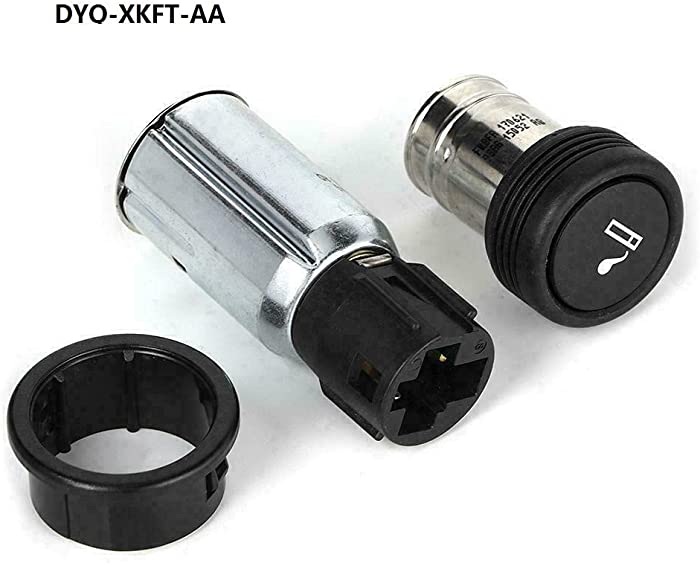





Cigarette Lighter Assembly include Element Knob Socket Power Outlet RING Trim Housing Fits E150 E250 E350 Escape Excursion Expedition F150 F250 F350 F450 Super Duty Fusion Mustang Ranger Taurus
$4.95
SCHNECKE automotive-cigarette-lighters
Why Do We Still Use Car Cigarette Lighter PlugsCigarette lighter receptacle: 12 volt cigar lighter plug. The cigarette lighter receptacle in an automobile, initially designed to power an electrically heated cigarette lighter, became a de facto standard DC connector to supply electrical power for portable accessories used in or near an automobile. While the cigarette lighter receptacle is a common feature of automobiles, as a DC power connector it has the disadvantage of relatively low current rating and poor contact stability. Examples of devices that can be operated from a cigarette lighter receptacle include lights, fans, beverage heating devices, and small motorized tools such as gas compressors for inflating tires. Many portable electronic devices such as music players or mobile telephones use a cigarette lighter receptacle to recharge their internal batteries or to directly operate from the vehicle electrical system. Adapters for electronic devices may change voltage to be compatible with the supplied device. Devices that require alternating-current mains electricity can be operated with a plug-in inverter. Currently, automobiles may provide several 12 V receptacles that are intended only to operate accessories and that are not to be used with a cigarette lighter. Car manufacturers may make a cigarette lighter an optional extra-cost accessory. Usually, only one 12 V receptacle near the driver will accommodate an actual cigarette lighter, with other receptacles designated as "12 V auxiliary power outlets" which are not physically able to power a car lighter.
 Traditional Car Cigar Lighter UsageThe traditional lighter is a metal or plastic cylinder containing a thin coil of nichrome wire, through which high current (~10 amperes) passes when the device is activated, usually by pushing it into the socket as though it were a button. When pushed in, the lighter is held against the force of a spring by a hook attached to a bi-metallic strip The heating element becomes glowing orange hot in seconds, causing the bi-metallic strip to bend and unhook the mechanism, and the handle pops out. If the lighter then promptly removed from its socket, it can light a cigarette, cigar or tinder. History The electrical cigar-lighter was invented and patented in the early 1880s by Friedrich Wilhelm Schindler. Probably in the 1920s they became cigarette-lighters, when cigarettes replaced cigars on the market widely. In the United States cigar lighters started appearing as standard equipment in automobiles in 1925/26. Use as An Electrical Outlet In newer cars, the socket often ships with a plastic dummy plug, without the lighter heating element due to declining popularity of smoking. However, the socket continues to exist to power consumer electronics in cars as the primary purpose. Often, a vehicle may come with several outlets for convenience, some in the rear passenger area of the vehicle. Even the cargo area may be supplied with sockets for such purposes as powering portable GPS devices, recharging telephones, or powering a tire pump, a vacuum cleaner or a cooler. These usually have a plastic cap tethered to them, and are usually labeled as being only for DC power since they are not intended to withstand the heat produced by an electric cigarette lighter. Twelve volt automobile plugs are standardized in the United States by UL Standard 2089 regarding vehicle battery adapters. This standard covers plugs and cord sets that insert into cigarette lighter receptacles. In Europe, 12 volt plugs and sockets are not specially regulated and do not require approvals for CE mark. USB standard 5-volt outlets are offered in tandem with cigar lighter outlets in newer vehicles. The cigar lighter outlet has even enjoyed some popularity outside of automobiles, such as boats, and even nonvehicular applications on AC adapters that convert to 12 volt DC. The male end is sometimes used to feed power into a vehicle to recharge a battery. For instance, portable solar battery maintainers generally connect to a vehicle's battery in this manner. Trickle chargers also sometimes connect in this way, eliminating the need to leave a vehicle's hood open as well as eliminating the possibility of reversed polarity Features & detailsFeatures
Product information
Additional InformationCompare with similar items
Brief content visible, double tap to read full content.Full content visible, double tap to read brief content. VideosBrief content visible, double tap to read full content.Full content visible, double tap to read brief content.Related posts |















